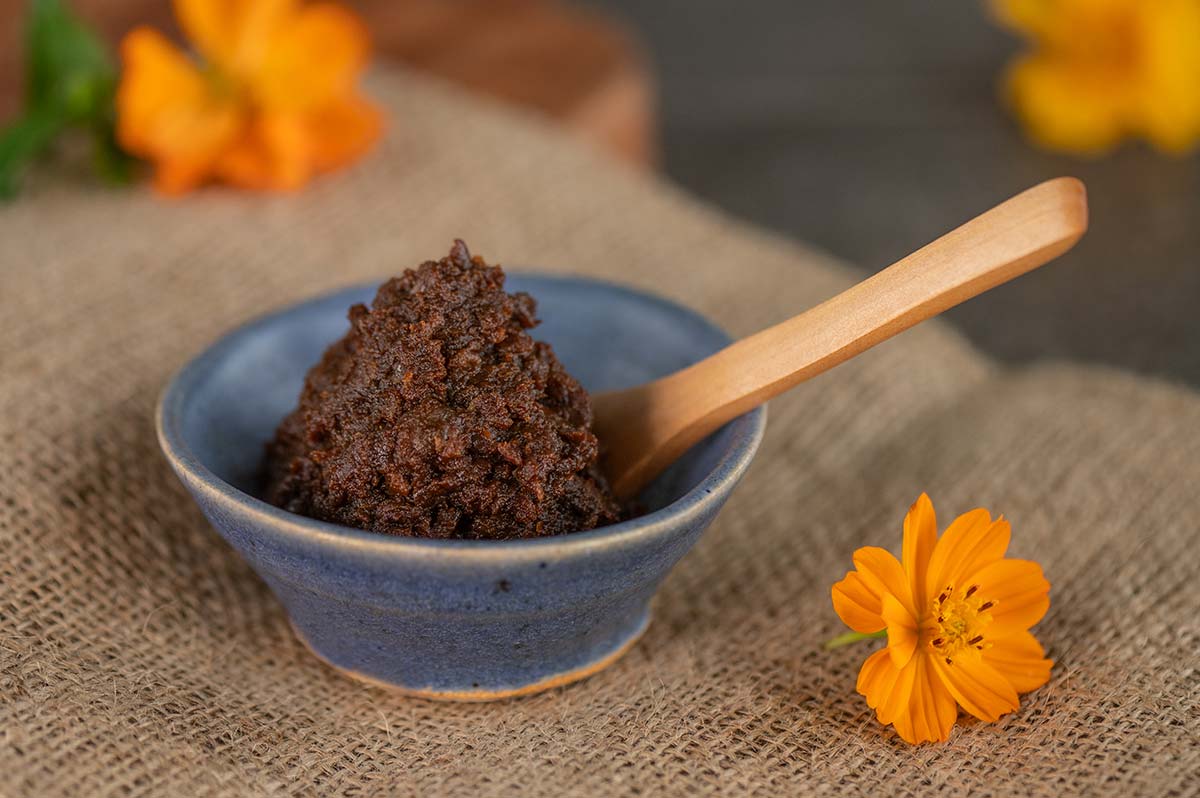
Please scroll down for a longer answer.

From $15.70

From $13.80

From $15.70

From $15.70

From $13.80

From $13.80

From $14.60


At South River, the deeper motive and spiritual impulse behind our work with miso is very much aligned with this venerable tradition: We must continue to ask today, how can our food carry healing forces necessary to support and strengthen the divine intent of the human spirit?
Miso has no equivalent among western foods. It is made through a unique double fermentation process. Cooked beans (traditionally only soybeans were used) are mixed together with salt and fermented grain, called koji (usually made from rice or barley). This mixture is then placed into wooden fermentation vats and allowed to age and ripen for a few weeks, for several months, or for several years, depending on the variety and its salt content. Traditional natural miso is always unpasteurized and has a distinct chunky texture.6
As food for thought, it should be said that miso is the unique fermentation of seeds: seeds from the grass and clover families of plants which carry the essence of life, and which are the basis, direct or indirect, of the flesh and blood, “bread and wine”, of our humanity.
As food for the table, miso can be thought of as an all-purpose savory seasoning for flavoring soups and vegetable dishes, or for making salad dressings, sauces, and spreads. It is used in many of the same ways we in the West use salt, only miso is a much more balanced way of using salt. As a condiment, only a few teaspoonfuls are used per person on a daily basis. At the same time, miso is such a concentrated source of high-quality plant protein and other nutrients that only a small amount is necessary to complement and enhance the nutritional value and flavor of other plant-based foods.
There are many different types and varieties of miso, distinguished by the ingredients used and their proportions. The more savory, longer-aged varieties develop warm, earthy tones ranging from rich chocolate browns to loamy blacks as the miso darkens with age. Lighter varieties of miso, made with less salt and aged for less time, appear in sunlight tones of creamy yellow, caramel, and beige.
Each variety of miso has its own distinct flavor and aroma. The darker varieties are more savory, rich in protein, almost meat-like to taste.7 The lighter types are comparatively sweet and refreshing to taste, with the powerful activity of amylase enzymes. To sensitive palates, no two varieties of miso taste the same; and the range of colors, textures, and aromas is as varied as the ingredients used. In Japan, different regions are known for their distinctive varieties of miso. There are specialty shops which sell many different kinds of miso, just as you would expect to find many varieties of cheese in a quality food market in the West.
Miso has earned its reputation as a flavorful and healthful ingredient in the kitchens of many diverse cultures, and it is prized by cooks of all traditions for its almost unlimited versatility. Miso is most commonly used to season soothing soups and stews; to make delicious homemade sauces, dressings, dips, and sandwich spreads; to make jams and relishes, or chutney toppings for simple grain dishes. It can be used like cheese in casseroles; as a gravy base with sautéed or steamed vegetables; as a masterful tenderizing marinade for fish, poultry, and meats; as a starter for unyeasted bread-making; as a pickling medium for vegetables. In The Book of Miso, the classic and most complete English language reference, there are over 400 recipes using miso in 15 different categories of traditional use.8
Finally, we must acclaim, with Dr. Akizuki above, the therapeutic value of miso as a superlative medicinal food. In addition to its delicious flavor, miso enlivens and strengthens our immune system, the foundation of our health and resistance to disease. Fine quality, unpasteurized miso is an extraordinary, living, probiotic food. It contains a vast storehouse and complex diversity of natural digestive enzymes, Lactobacillus, and many other probiotic microorganisms, which aid in the digestion and assimilation of whatever foods we eat.9 As such, miso is a powerful ally, one of the best, in making possible the sage advice of Michael Pollan: “Eat food, not too much, mostly plants.”10
Notes:
During the cooler months, we ship anywhere in the United States. The rest of the year, please visit your local grocer.
PH: 413.369.4057
Information
Sign up for our newsletter, South River Currents, where we share stories, photos, recipes, videos, and more.